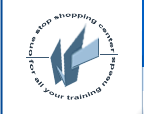This course is provided by Wintrac.
Wintrac
provides one stop shopping for all your IT training needs. Wintrac’s course
catalog of over two thousand courses includes courses on
Multimedia & Design
training,
Digital Photography
training,
Discreet training,
Macromedia training,
NetObjects training and
Quark training
Quark Training Overview
As you begin this course, you likely have a basic understanding of how QuarkXPress works. You may be able to create simple layouts and perform basic tasks, but find that's not enough to effectively work within a more professional, fast-paced environment. Throughout this course, you will build on your existing skills to learn some of the more advanced features of QuarkXPress, as well as learn some techniques that will allow you to improve your workflow.
Objectives
You will take existing layouts and use efficient techniques to make them more professional-looking.
Target Student:
Beginner or junior level designers who know the basics of QuarkXPress, but want to learn how to use it more effectively. They should already have a basic understanding of layout techniques, but want to expand their skills, especially in regards to typography issues.
Prerequisites
To ensure your success, we recommend you first take the following course or have equivalent knowledge:
Delivery method
Instructor led, group-paced, classroom-delivery learning model with structured hands-on activities
Hardware Requirements
You will need
- A Pentium-based Windows-compatible computer.
- A CD-ROM drive.
- At least 128 MB available RAM.
- At least 190 MB of hard disk space for QuarkXPress 6 installation, and an additional 10 MB for the course data.
Platform Requirements
- Microsoft Windows 2000 or Windows XP.
Software Requirements
Performance-Based Objectives
Upon successful completion of this course, students will be able to:
- create graphic effects using Bézier lines and shapes.
- create type effects so that body text and display type enhance the design of a layout.
- lay out pages efficiently.
- control type color so that the densities of text blocks are as you want.
- apply color management so that colors match as accurately as possible.
- manage long documents.
Course duration
1 Day
Quark Training Course outline
Lesson 1: Creating Graphic Effects with Bézier Paths
- Topic 1A: Draw Bézier Paths
- Topic 1B: Reshape a Picture Box
- Topic 1C: Combine Bézier Shapes
- Topic 1D: Silhouette Pictures
Lesson 2: Creating Type Effects
- Topic 2A: Create Drop Caps
- Topic 2B: Reverse Type with a Style Sheet
- Topic 2C: Typeset Numbers
- Topic 2D: Create a Type Mask
- Topic 2E: Flow Type on a Path
- Topic 2F: Create a Type Shadow
Lesson 3: Efficiently Laying Out Pages
- Topic 3A: Organize Design Elements in Libraries
- Topic 3B: Step and Repeat Items
- Topic 3C: Adjust Space Between Items
- Topic 3D: Manipulate Items Within Groups
- Topic 3E: Layer Items
Lesson 4: Professionally Typesetting Layouts
- Topic 4A: Choose Appropriate Typefaces
- Topic 4B: Choose Appropriate Leading
- Topic 4C: Set Justification Options
- Topic 4D: Hyphenate Text
- Topic 4E: Track Type
- Topic 4F: Kern Type
Lesson 5: Applying Color Management
- Topic 5A: Determine When To Use Color Management
- Topic 5B: Set Up Color Management
- Topic 5C: Change Image Profiles
- Topic 5D: Choose Printer Device Profiles
Lesson 6: Managing Long Documents
- Topic 6A: Change Type Formatting Automatically
- Topic 6B: Section a Document
- Topic 6C: Create A List
- Topic 6D: Index Documents
- Topic 6E: Create A Book
Appendix A: Type Shortcuts



